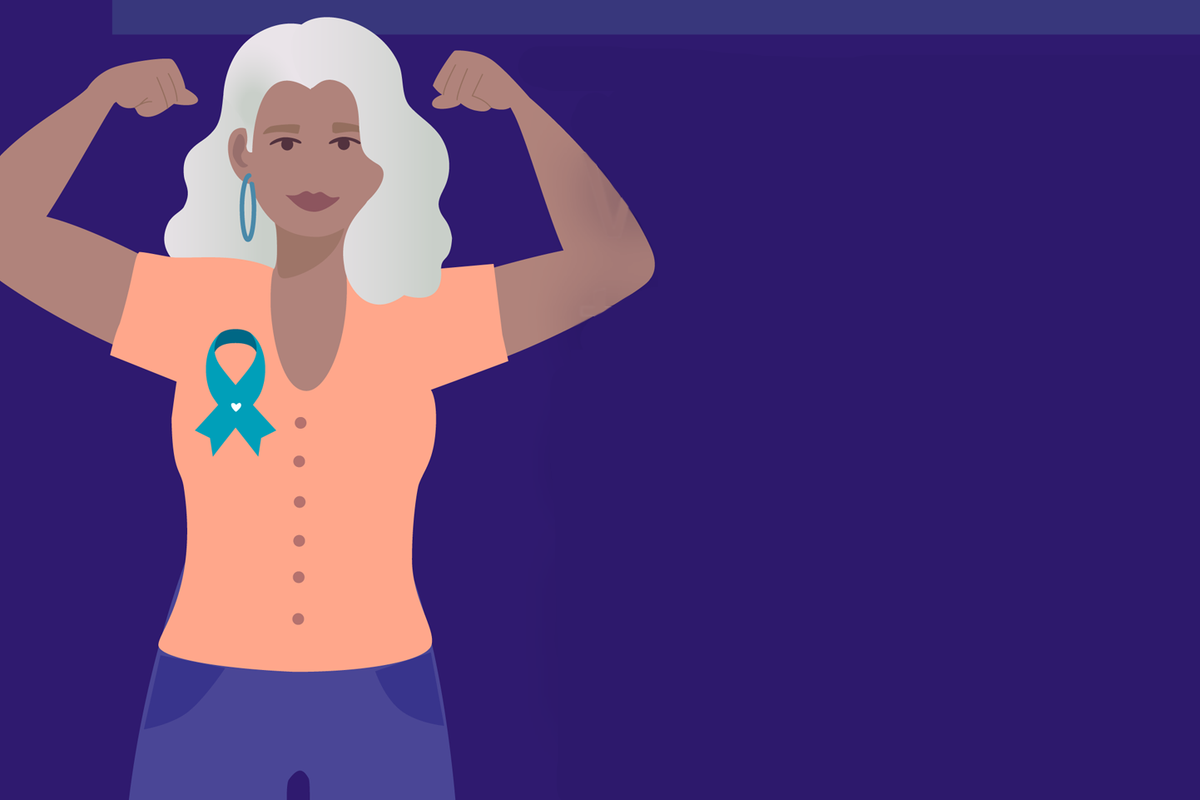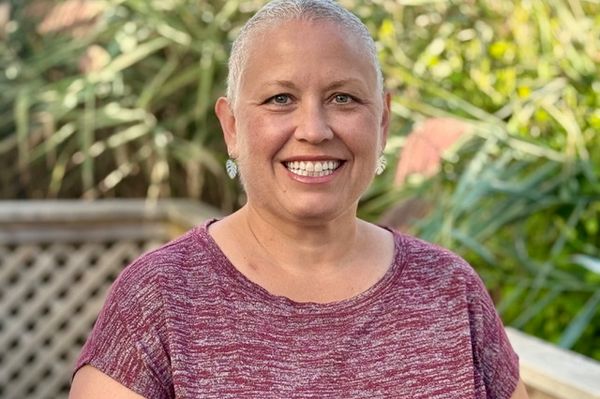Ovarian cancer, cancer of the ovaries, is often called a silent killer because it has no symptoms in the early stages and signs like bloating can be easy to ignore.
Rates of ovarian cancer are dropping in the U.S. but it is still one of the most common cancers in women.
About 1 in 78 women in the U.S. will get ovarian cancer in their lifetime.
Anyone with ovaries can develop ovarian cancer, but some groups have higher risk
- Most new diagnoses are among women 63 years or older
- Ovarian cancer affects more white women than Black women.
There are more than 30 subtypes of ovarian cancer. The 3 main types are:
- Epithelial ovarian carcinomas (85%-90% of cases): Most common, often diagnosed in advanced stages. Affects the outer surface of the ovary.
- Germ cell tumors (2%): Usually affects women in their teens or 20s. Starts inside the ova (eggs).
- Stromal cell tumors (1%): The rarest form, often found in the early stages. Develops in the tissues around the ovaries.
Ovarian cancer stages and survival rates
Ovarian cancer is given a stage when it’s diagnosed. The earlier the stage, the higher the chances of successful treatment.
- Stage 1: Earliest disease, tumor hasn’t spread
- Stage 2: Cancer has spread to nearby organs, like the uterus
- Stage 3: Cancer has spread beyond nearby organs to the lymph nodes or the lining of your abdomen
- Stage 4 (metastatic ovarian cancer): Cancer has moved to the lungs, liver and/or other distant organs
Ovarian cancer symptoms
In the earliest stages, ovarian cancer symptoms can be so subtle they may be mistaken for other issues like irritable bowel syndrome, a urinary tract infection or even constipation. By the time symptoms are more noticeable, the disease has often spread. This is why early detection is vital.
The most common signs and symptoms include:
- Abdominal pain and bloating
- Pelvic/lower back painFeeling full quickly or difficulty eating
- Urgent and frequent urination
- Constipation or diarrhea
- Fatigue/low energy levels
- Nausea/vomiting
- Weight loss
- Abnormal vaginal bleeding/discharge
Ovarian cancer tests
Blood tests
Tumor markers: Helps identify cancer cells in your body
Genetic testing: Looks for BRCA1 or BRCA2 gene mutations that indicate higher risk for developing hereditary ovarian cancer
Complete blood count (CBC): Provides information about your body’s health
Comprehensive metabolic panel (CMP): Provides information about metabolism and chemical balance
Imaging:
Ultrasounds, computed tomography scan (CT scan) and magnetic resonance imaging (MRI) Shows what’s happening inside your body — if there’s a mass, where it is, and how large it is.
If you have concerns or symptoms — especially if you have a family history of ovarian cancer — speak with your healthcare provider. Be proactive with your health!
This resource was created with support from Merck.
- Exclusive Interview with Fran Drescher ›
- Even a Hysterectomy May Not Protect Against Ovarian Cancer ›
- Ovarian Cancer: Know the Symptoms and Risk Factors ›
- Ovarian Cancer ›
- Signs and Symptoms of Ovarian Cancer - HealthyWomen ›
- Señales y síntomas del cáncer ovárico - HealthyWomen ›
- Valerie Palmieri Is Talking About Ovarian Cancer - HealthyWomen ›
- What to Do If You’ve Just Been Diagnosed with Ovarian Cancer - HealthyWomen ›
- Qué hacer si te acaban de diagnosticar cáncer ovárico - HealthyWomen ›
- Understanding Your Risk for Ovarian Cancer - HealthyWomen ›
- Comprender tu riesgo de cáncer ovárico - HealthyWomen ›







